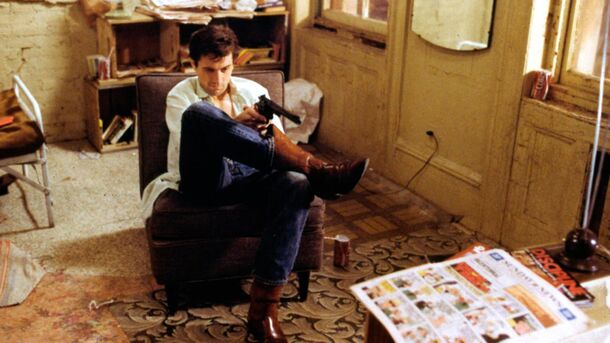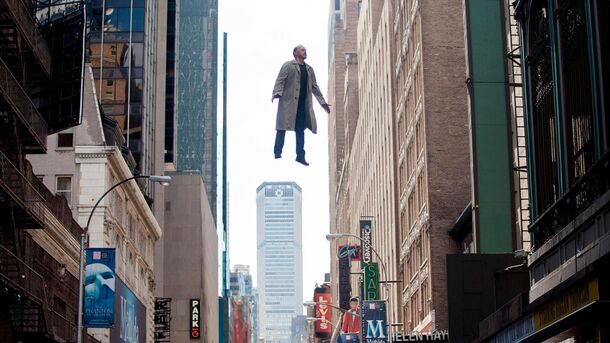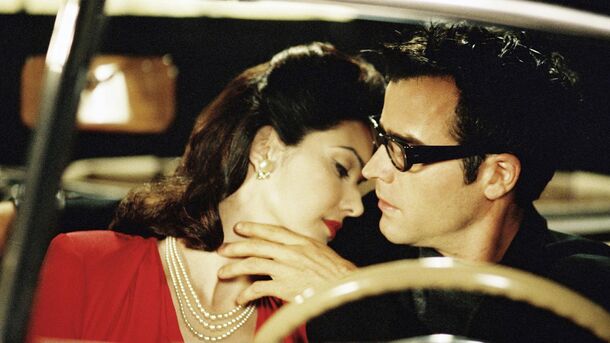10 Controversial Movie Endings That Are Still Playing With People’s Minds

It's better to live trying to find answers rather than to die without even daring.
While many movie endings fit neatly into the tone of the film and wrap up all possible scenarios, some finales have a unique power to keep viewers' minds racing long after the credits roll.
From open-ended plots with endless interpretations to puzzling cliffhangers, here are 10 controversial movie endings that still linger in our minds years later.
1. Taxi Driver (1976)
Martin Scorsese 's Taxi Driver follows Travis Bickle, portrayed by Robert De Niro, as he becomes a violent loner trying to rid New York City of its perceived evils. After being injured, Travis falls into a coma and is hailed as a hero when he awakens.
Travis' narrative blurs the line between reality and delusion, with some viewers questioning whether his hero status is genuine or a product of his disturbed mind.

2. American Psycho (2000)
In Mary Harron's 2000 black comedy, the audience is left to question the reality of the actions of Patrick Bateman, played by Christian Bale. After his confession of murder to his lawyer, which is rejected by the lawyer, the audience is left wondering if Bateman is an unreliable narrator who may be lying or hallucinating.
However, according to Harron, she regrets that the film's ending led many to believe that it was all in Bateman's head, as the original intention was to create a more ambiguous ending, suggesting that Bateman might escape punishment due to his high social status.
.jpg)
3. The Shining (1980)
Stanley Kubrick's 1980 horror classic presents an enigmatic ending, as Jack Torrance, driven mad by the sinister Overlook Hotel, ultimately perishes in pursuit of his wife Wendy and their son Danny.
However, the film's final moments focus on an old 1921 photograph of Jack in the hotel's ballroom, leaving viewers to wonder whether Jack has become a permanent part of the hotel's malevolent history, or he may have always been connected to the Overlook Hotel.
4. Shutter Island (2010)
In Martin Scorsese's neo-noir psychological thriller, the film's intense climax revolves around US Marshal Teddy Daniels, played by Leonardo DiCaprio, who reveals his true identity as Andrew Laeddis, a patient at the mental hospital. Confronted with his dark past, Andrew engages in a conversation with his psychiatrist that leads to a shocking decision: a lobotomy.
In his final moments, Andrew's poignant question lingers, challenging the nature of his existence. Torn between interpreting Andrew's fate as a genuine relapse or a strategic escape from unbearable guilt, this powerful ending leaves the viewer in suspense.
5. Eternal Sunshine of the Spotless Mind (2004)
Michel Gondry's psychological drama centers on the tumultuous relationship between Jim Carrey 's Joel and Kate Winslet 's Clementine. Leaving the ending open to interpretation, they unwittingly rediscover their connection after erasing their memories of each other.
Whether the ending is viewed optimistically or tragically, the movie's conclusion can be seen in two ways: On the one hand, their history of ups and downs suggests the possibility of another breakup, with familiar exchanges echoing their past. But the ending also offers a glimmer of hope as they enjoy a playful moment on a snowy beach, suggesting the potential for growth, both individually and as a couple.

6. Birdman (2014)
Alejandro González Iñárritu's Oscar-winning film centers on Riggan Thomson's quest to reinvent his career after a famous superhero role. In a pivotal scene, Riggan, portrayed by Michael Keaton, appears to attempt suicide during a play, but survives and ends up in a hospital. Here he confronts his alter ego, Birdman, and jumps out of a window.
While a logical interpretation suggests that Riggan is dead, his daughter Sam's upward glance at the sky and smile adds ambiguity, leaving viewers to question whether Riggan has freed himself from inner torment or met his ultimate fate, blurring the line between reality and illusion.

7. Mulholland Drive (2001)
In David Lynch's surreal masterpiece, the complex narrative unfolds in two distinct acts. The first follows Betty Elms and her mysterious encounter with the amnesiac Rita, while the story takes an abrupt turn with the opening of a blue box. A common interpretation suggests that the second half represents reality, with Diane Selwyn, a struggling actress, dealing with the aftermath of a failed relationship with Camilla Rhodes.
While Diane's transformation into Betty represents her escape into a more hopeful dream world, the film's enigmatic narrative continues to provoke discussion and interpretation, making it a timeless cinematic puzzle.

8. Titanic ( 1997)
James Cameron 's Titanic concludes with an emotionally charged sequence that blurs the lines between dream and afterlife. After the elderly Rose shares her memories, she lies down quietly to rest, and the movie transitions into a dreamlike sequence. In this dream, young Rose is reunited with her lost love, Jack, as well as other passengers who perished on the ill-fated ship.
This sequence leaves it up to the audience to interpret whether it represents a reunion in the afterlife, a vivid dream, or Rose's poignant memories that transcend time and death, making it an evocative ending that still haunts viewers to this day.
9. Inception ( 2010)
Christopher Nolan 's mind-bending thriller culminates in a startling sequence that has intrigued audiences for years. Leonardo DiCaprio's Dom Cobb appears to reunite with his children, hinting at a possible return to reality after delving into the intricacies of dream-sharing.
Yet the film's enigmatic ending revolves around a spinning top that cuts to black, leaving the top's fate open. This ending sparks debate about whether Dom has truly returned to reality or remains trapped in a dream forever. But it isn't important whether the top is still spinning or not, it's important that Cobb isn't looking anymore.
10. The Thing (1982)
John Carpenter's 1982 sci-fi horror masterpiece's conclusion is a testament to the film's lingering suspense. After an explosive showdown, the remaining crew members, Childs and MacReady, sit together in the harsh Antarctic cold, sharing a bottle of scotch.
The chilling uncertainty lingers as viewers speculate whether the Thing has infiltrated one of the men or if it has been defeated, ultimately leaving the enigmatic outcome to the audience's imagination.